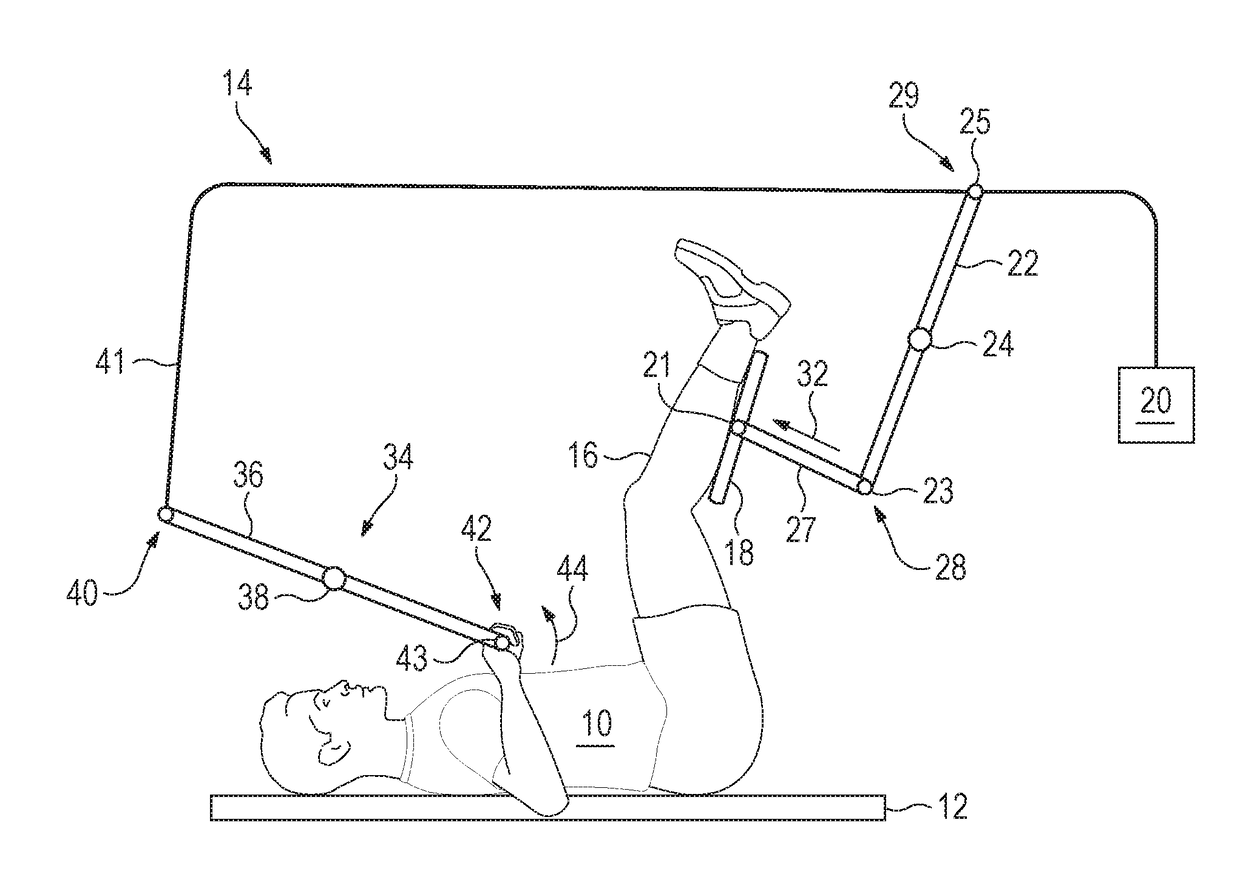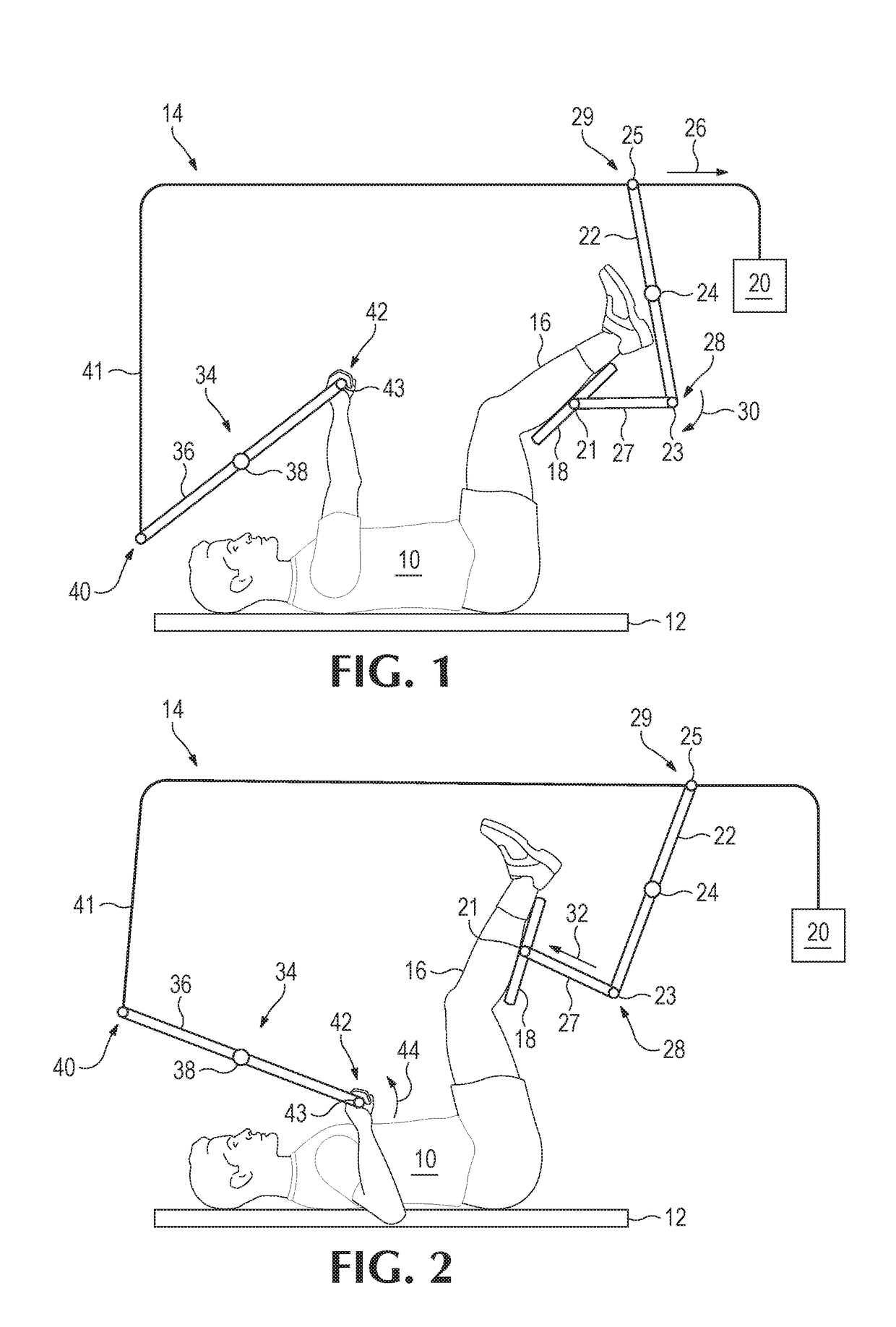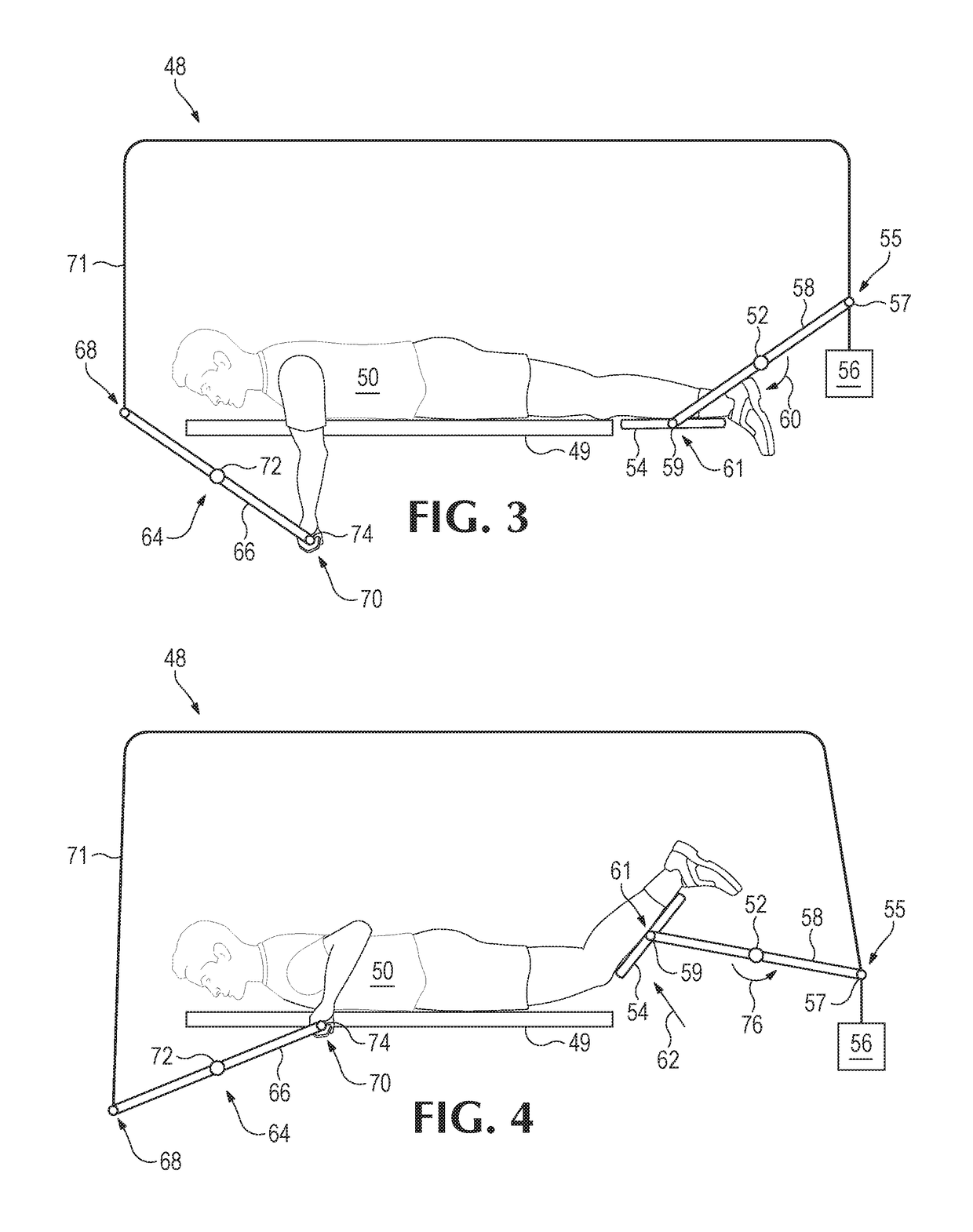Facilitated stretching machine
- Summary
- Abstract
- Description
- Claims
- Application Information
AI Technical Summary
Benefits of technology
Problems solved by technology
Method used
Image
Examples
first embodiment
[0019]FIG. 1 shows a user or subject 10 laying on his back on a supporting surface 12. In such a first embodiment, the user 10 interacts with the system 14 by placing one or both legs 16 on a first element, or a subject-engaging surface 18. The surface 18 may be rectangular or be specifically shaped to fit a user's leg or the both of the user's legs. The surface 18 may be operatively connected to a second element, or a force-applying element 20 by a rotatable bar or device 22 that rotates about a first point of secured support, or fulcrum 24, and three pivoting hinges 21, 23, and 25. When the force-applying element 20, is applied, the first end 29 of the rotatable bar 22 moves in the direction of the force, such that the hinge 25 supports rotation in a clockwise direction, represented by the arrow 26 in FIG. 1, about the first fulcrum 24. The second end 28 of the rotatable bar 22 moves in a first rotational direction, the direction represented by arrow 30 in FIG. 1, aided by hinge 2...
second embodiment
[0022]FIGS. 3 and 4 represent the stretching device 48 that may function to stretch a user's 50 hip flexors and / or abdominal muscles and / or other surrounding muscles. In use, the user 50 first lays on his or her stomach on a surface 49. The stretching device 48 may have a first point of secured support, or fulcrum 52 that is operatively connected to subject-engaging surface 54. Similar to the device 14, a force-applying element 56 may be used to selectively apply force to a user's target body part(s) with the use of rotatable bar or device 58, and hinges 57 and 59. In this embodiment of the present invention, application of a force causes the first end 55 of the rotatable bar 58 to rotate about the first fulcrum 52 in a first rotational direction, or a clockwise manner, as represented by arrow 60, pivoting about both hinges 57 and 59, and causing the second end 61 of the rotatable bar 58 to apply pressure to the user 50 via the subject engaging surface 54. Such rotation causes the s...
third embodiment
[0024]the present in FIGS. 5 and 6 shows a user 78 using a third stretching device 80 for stretching the user's 78 upper body. In such an embodiment, the user 78 may be positioned in a seat 82 having a back support 84 that may function to resist pressure applied by the subject engaging surface 86. The subject-engaging surface 86 is operatively connected to a first point of secured support, or fulcrum 88 via a rotatable bar or device 90, hinges 91 and 92, and elongate element 95. As viewable in FIGS. 5 and 6, one end 83 of the rotatable bar 90 is operatively connected to the subject engaging surface 86 via a hinge 92. The opposing end 85 of the rotatable bar 90 is connected to a force-applying element 94 via a hinge 93, such that when force is applied by the force-applying element 94, the bar 90 rotates in a first rotational direction, or a clockwise direction, as represented by arrow 96. Therefore, when force is selectively applied via the force-applying element 94, the bar 90 rotat...
PUM
 Login to View More
Login to View More Abstract
Description
Claims
Application Information
 Login to View More
Login to View More - R&D
- Intellectual Property
- Life Sciences
- Materials
- Tech Scout
- Unparalleled Data Quality
- Higher Quality Content
- 60% Fewer Hallucinations
Browse by: Latest US Patents, China's latest patents, Technical Efficacy Thesaurus, Application Domain, Technology Topic, Popular Technical Reports.
© 2025 PatSnap. All rights reserved.Legal|Privacy policy|Modern Slavery Act Transparency Statement|Sitemap|About US| Contact US: help@patsnap.com



